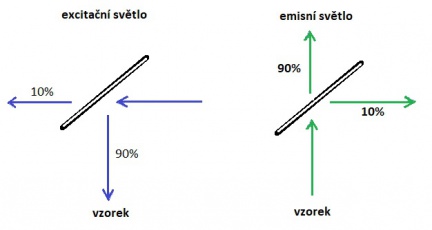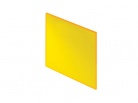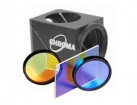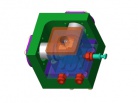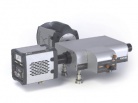In general, dichroic mirrors are a type of interference filter that divides light by wavelength.
They are used in microscopy because of their ability to separate excitation and fluorescence (emission) light when placed in the optical path at a 45° angle to the light source. Longer wavelengths (emission beams) pass through this filter, while shorter wavelengths (excitation beams) are blocked and reflected at 90° into the objective. The efficiency of separation of excitation and emission light is high in dichroic mirrors - the reflection efficiency of excitation light is more than 90% and the passage efficiency of emission light is also more than 90%.
Dichroic mirrors are part of e.g. fluorescence microscopes, where they pass the maximum of emission light or reflect the maximum of excitation light according to the emission and excitation maxima of the fluorophore used.
